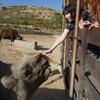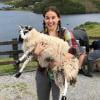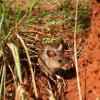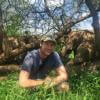Sensors already equip a range of tools to enhance monitoring capacity for conservation. Some of the higher bandwidth technologies, like camera traps and acoustic monitoring systems, have been essential elements of the conservation toolkit for decades, and thus have enough users that we've created dedicated WILDLABS groups to address them. But a whole range of lower bandwidth sensors beyond these core technologies are being increasingly integrated into conservation monitoring systems, and offer rich new insights into the wildlife and ecosystems we're all working to protect. As with many technologies, cost and access have historically been challenges to the adoption of new sensors, but with low-cost and open-source solutions on the rise, we're excited to see what the future of this space holds.
Getting Started with Sensors:
- Watch Shah Selbe's Tech Tutors episode on scaling FieldKit, an open-source conservation sensor toolbox, from a project to a successful conservation tech product.
- Check out our Virtual Meetup about Low-Cost, Open-Source Solutions in conservation tech, including a talk by Alasdair Davies on the Arribada Initiative's work with thermal sensors in early warning systems.
- For a more in-depth introduction, watch the first video in our datalogger mini-series: Freaklabs: How do I get started with Arduino?
In this group, you'll meet others who are using and innovating diverse sensors in their work, discuss ways to make sensors more effective & accessible for conservationists, learn about what sensors are already helping us accomplish in the field, and have the opportunity to ask and answer questions. Join this group to get started!
Header image: Emma Vogel, University of Tromsø
No showcases have been added to this group yet.
- @mattaudette
- | he, him, his
Software Tester and Test Automator at Wildlife Protection Solutions
- 0 Resources
- 1 Discussions
- 24 Groups
- @KathHecht
- | she/her
I am a biologist/ecologist without concrete specialisation. New Zealand's unique but fragile flora & fauna have taught me the importance of increasing awareness with locals and visitors alike. This is my constant motivator.
- 0 Resources
- 0 Discussions
- 10 Groups
- @tmcgrath
- | He / Him
Geographer, Program Manager, Engineering Manager
- 0 Resources
- 1 Discussions
- 11 Groups
A Marine Conservationist based in Malaysia

- 0 Resources
- 0 Discussions
- 5 Groups
Lecturer and researcher interested in rural applications of Interaction Design. Spent more than a decade teaching in Asia-Pacific (India, China, Singapore, Australia); now based at Glasgow School of Art's rural campus in Forres, Scottish Highlands.
- 0 Resources
- 0 Discussions
- 5 Groups
Snow Leopard Trust



- 0 Resources
- 44 Discussions
- 6 Groups
- @kricherds
- | she/her
Technologist. Civic Science Fellow & Data Inclusion Specialist at OEDP.

- 0 Resources
- 0 Discussions
- 14 Groups
British-Costa Rican | Interested in transdisciplinary research in Planetary Health amongst other things

- 0 Resources
- 1 Discussions
- 13 Groups
- @NinaTuttie
- | She
An avid learner interested in wildlife ecology, conservation technology and community development
- 0 Resources
- 0 Discussions
- 8 Groups
Ol Pejeta Conservancy
- 0 Resources
- 2 Discussions
- 8 Groups
- @KiaraHaylock
- | She/Her
PhD in Animal Ecology and Behavioural Physiology. Interested in the movement, behavioural and physiological responses of animals to environmental variability.
- 0 Resources
- 0 Discussions
- 13 Groups
20+ years traveler and management consultant turned tech founder and conservationist. Founder & CEO of ZAMBEZI ZERØ; super intelligence to safeguard biodiversity.
- 0 Resources
- 0 Discussions
- 15 Groups
Welcome to our new Conservation Tech Showcase, a series highlighting innovative and impactful projects from outstanding organizations around the world.
11 May 2023
The Zoological Society of London, with the support of WILDLABS and the UK Space Agency, are proud to publish this new guide to satellite technologies for tracking wildlife.
17 February 2023
A pilot program in Oregon’s Willamette Valley will test how well artificial intelligence-enabled sensors can identify and characterize wildfires, which will help with responder resource allocation and boost community...
15 February 2023
Technology to End the Sixth Mass Extinction. Salary: $104k-144K; Location: Washington DC or Seattle WA, potential hybrid; 5+ years of Full stack development experience; Deadline March 15th - view post for full job...
10 February 2023
Frontiers in Conservation Science is calling for submissions for a Research Topic that aims at examining the paradoxical relationship that has been established in recent years between the flagships of new technology...
10 February 2023
Are you excited by the potential for new technologies to help monitor the natural world? Do you enjoy communicating your passion for technology and nature with diverse audiences? We are seeking an enthusiastic...
2 February 2023
Consultancy opportunity at ZSL for an experienced monitoring specialist to support species monitoring in rewilding landscapes across Europe
31 January 2023
Sending real-time alerts from ecological sensors such as camera traps in areas with poor data connectivity is complex and involves integrating a large number of potentially complex hardware and software components. Our...
13 January 2023
The authors "tested the use of a thermal imager to assess the occupancy of enclosed nests, using nest-box populations of small passerines. Based on a thermal image of each nest box, observers were able to predict nest-...
13 January 2023
WILDLABS and Fauna & Flora International are seeking an early career Vietnamese conservationist for 12-month paid internship position to grow and support the Southeast Asia regional community in our global...
11 January 2023
As the FieldKit hardware ecosystem grows, Conservify is seeking a Junior Electrical Engineer to assist with testing, troubleshooting, prototype development, and developing production test fixtures for our growing...
9 December 2022
August 2025
event
September 2025
event
March 2026
April 2024
event
March 2024
event
17 Products
Recently updated products
121 Products
3 R&D Projects
84 Organisations
Recently updated products
Recently updated R&D Projects
Recently updated organisations
| Description | Activity | Replies | Groups | Updated |
|---|---|---|---|---|
| Thank you! I will follow up by email. |
+8
|
Animal Movement, Conservation Dogs, East Africa Community, Geospatial, Sensors, Women in Conservation Tech Programme (WiCT) | 5 months ago | |
| Thanks Jack, that's an interesting repo. |
|
Sensors | 5 months 1 week ago | |
| Sure, Akio! Happy to answer!1. Yes, something like that. The few existing i guess applied already for GPS collar (literally collar) that usually for big cats and some other big... |
|
Sensors, Animal Movement, Open Source Solutions | 5 months 2 weeks ago | |
| How much does it cost to incorporate machine learning into your conservation drone geospatial analysis? How does it speed up your workflow... |
|
Conservation Tech Training and Education, Drones, Geospatial, Open Source Solutions, Sensors, Software Development | 5 months 2 weeks ago | |
| Thanks so much for all the advice!! This seems very achievable. We don't mind having the fibre optic fixed in place as we planned to have a shorter one specifically for this... |
|
Sensors, Marine Conservation | 5 months 2 weeks ago | |
| Hi Dan, Not right now but I can envision many uses. A key problem in RS is data streams for validation and training of ML models, its really not yet a solved problem. Any... |
|
Emerging Tech, AI for Conservation, Animal Movement, Build Your Own Data Logger Community, Camera Traps, Connectivity, Conservation Tech Training and Education, Data management and processing tools, Geospatial, Sensors | 5 months 3 weeks ago | |
| @Eric24 The use case is as I wrote to Patrick: "a parent unit in the centre of a conservation area which is to recieve one way packets from child sensor units spread around the... |
|
Sensors | 6 months ago | |
| Hi Lucille,Thank you for your reply! We’d be really interested in learning more about your developments. We’ll contact you soon to arrange a discussion.Thank you.Best regards,... |
|
Acoustics, AI for Conservation, Sensors | 6 months 1 week ago | |
| Hi Simon,We (Reneco International Wildlife Consultants) have an ongoing collaboration with a local University (Abu Dhabi, UAE) for developing AI tools (cameratrap/drone... |
|
Acoustics, AI for Conservation, Animal Movement, Camera Traps, Citizen Science, Connectivity, Drones, Early Career, eDNA & Genomics, Marine Conservation, Protected Area Management Tools, Sensors | 7 months ago | |
| No, not yet. The player we attached does support slower/faster replay up to a certain precision, but I'm not sure that this will be sufficiently precise for the kind of offsets we... |
|
Animal Movement, Data management and processing tools, Sensors, Software Development | 7 months 4 weeks ago | |
| Hello everyone,I built Brave Puffin (https://bravepuffin.com) - a small, autonomous, long range, solar powered boat. It is designed to... |
|
Build Your Own Data Logger Community, Marine Conservation, Sensors | 7 months 4 weeks ago | |
| Hello WalterThanks for your input. I have achieved better results with the puc when hooking it up to a powerbank. Have got them set up to "recording only", and GPS to low power... |
|
Acoustics, AI for Conservation, Citizen Science, Sensors | 7 months 4 weeks ago |
Enter the Zooniverse: Try Citizen Science for Yourself!
18 March 2020 12:00am
Webinar: IIED Community-Based Approaches to Tackling Poaching and Illegal Wildlife Trade
 IIED
IIED
17 March 2020 12:00am
Tutorial: Train a TinyML Model That Can Recognize Sounds Using Only 23 kB of RAM
16 March 2020 12:00am
Testing an Early Warning System to Mitigate Human-Wildlife Conflict on the Bhutan-India Border
11 March 2020 12:00am
Proximity Data - Analysis methods
10 March 2020 2:44pm
3 Ways Your Conservation Technology Could Become a Shiny Pile of Junk, and How to Avoid It
9 March 2020 12:00am
#Tech4Wildlife 2020 Photo Challenge In Review
4 March 2020 12:00am
sound loop device
3 March 2020 1:59am
Call for Nominations: Tusk Conservation Awards
3 March 2020 12:00am
Competition: Plastic Data Challenge
 Ellie Warren
Ellie Warren
3 March 2020 12:00am
Hawai'i Conservation Conference
 Hawaiʻi Conservation Alliance
Hawaiʻi Conservation Alliance
28 February 2020 12:00am
Fence-Based Elephant Early Warning System
25 February 2020 12:00am
Workshop: Using Bioacoustics for Field Survey
 CIEEM
CIEEM
20 February 2020 12:00am
Hacking Climate Change - Coaction on Climate Crisis
 COACT
COACT
20 February 2020 12:00am
HWC Tech Challenge Update: Thermal Elephant Alert System
17 February 2020 12:00am
ICEI2020: 11th International Conference on Ecological Informatics
 ICEI 2020
ICEI 2020
14 February 2020 12:00am
Seafood fund seeks ideas for innovation projects up to £250k
11 February 2020 12:00am
WILDLABS Virtual Meetup Recording: Acoustic Monitoring
5 February 2020 12:00am
Open source, low cost proximity loggers
17 December 2019 10:45am
WILDLABS Virtual Meetup Recording: Drones
9 November 2019 12:00am
Plant-Powered Camera Trap Breakthrough
15 October 2019 12:00am
How do you weigh a live whale?
9 October 2019 12:00am
Instant Detect 2.0 emerges
3 September 2019 12:00am
ESA Kickstarter: Environmental Crimes
22 August 2019 12:00am
ICCB 2019: 5 Key Discussions about the Future of Conservation Tech
21 August 2019 12:00am
Conservation and Technology Conference
 Bat Conservation Trust
Bat Conservation Trust
29 July 2019 12:00am
From the Field: Melissa Schiele
10 June 2019 12:00am
Technology companies, FCO, and conservation NGOs come together to scale technology solutions to end wildlife crime
4 June 2019 12:00am
Technology lab focused on wildlife protection opens on Ol Pejeta Conservancy
31 May 2019 12:00am
FLIR Conservation Discount Program
24 May 2019 4:39pm
25 May 2019 1:18am
Hi Montanamud,
Thanks so much for posting this. I'm Alasdair from the Arribada Initiative, working on the WWF / Wildlabs Asian Elephant Human Wildlife Conflict Challenge to develop an early warning system using thermopiles / microbolometers. We use the Lepton range of FLIR products. Do you know if Lepton modules will be eligable within the Conservation Discount Programme too?
Kind regards,
Alasdair




























































16 November 2023 1:11am